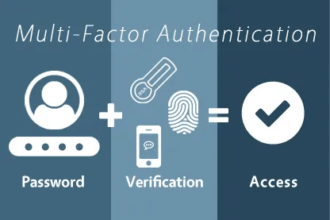Introduction: Defining a Reverse Proxy Server
In the vast world of web technology, there are tools and systems that play crucial roles behind the scenes. One such unsung hero is the reverse proxy server. But what exactly is it? Imagine a gatekeeper for your website—one that stands between users and servers, ensuring smooth communication while enhancing security and performance. Understanding reverse proxy servers can unlock new possibilities for managing traffic, optimizing load times, and safeguarding sensitive data. Whether you’re running a small blog or overseeing an enterprise-level application, grasping this concept can significantly impact how you navigate online challenges. https://acortaz.eu/que-es-un-servidor-proxy-inverso Let’s dive deeper into what makes reverse proxy servers essential in today’s digital landscape.
How Does a Reverse Proxy Server Work?
A reverse proxy server acts as an intermediary between users and web servers. When a user requests content, the request first goes to the reverse proxy instead of directly reaching the web server.
The reverse proxy processes this request. It determines which backend server should handle it based on predefined rules and loads. Once identified, it forwards the request to that specific server.
After receiving the response from the backend, the reverse proxy sends this data back to the user. This seamless interaction masks internal architecture while ensuring efficiency.
Furthermore, by caching responses temporarily, a reverse proxy can speed up load times for frequently accessed resources. It also provides an additional layer of security by hiding sensitive information about your infrastructure from outsiders.
Benefits of Using a Reverse Proxy Server
Using a reverse proxy server offers numerous advantages that can enhance your web infrastructure. First, it plays a crucial role in load balancing. By distributing incoming traffic across multiple servers, it ensures that no single server becomes overwhelmed.
Additionally, security is significantly improved with a reverse proxy in place. It acts as an intermediary between users and your backend servers, shielding them from direct exposure to potential threats.
Performance also sees a boost through caching capabilities. Frequently accessed content can be stored on the reverse proxy, reducing response times and minimizing the load on origin servers.
Moreover, implementing SSL termination simplifies certificate management by handling encryption at the reverse proxy level rather than on each individual server. This streamlining reduces complexity while enhancing overall site performance.
Flexibility is key; businesses can easily reroute requests or adjust configurations without disrupting user experience or service availability.
Common Uses of Reverse Proxy Servers
Reverse proxy servers serve a variety of essential functions across different sectors. One common use is load balancing. By distributing incoming traffic among several back-end servers, they ensure no single server becomes overwhelmed.
Another important role is enhancing security. A reverse proxy can act as an additional layer of defense against cyber threats, shielding the identity and location of internal servers from potential attackers.
In content delivery networks (CDNs), reverse proxies optimize the speed and efficiency of delivering static content to users worldwide. They cache frequently requested data, reducing latency and improving user experience.
Additionally, businesses often utilize reverse proxies for SSL termination, offloading encryption tasks from web servers to streamline processing power while maintaining secure connections.
These diverse applications highlight how integral reverse proxy servers are in modern web architecture and performance optimization.
Setting Up a Reverse Proxy Server
Setting up a reverse proxy server can seem daunting, but it’s manageable with the right approach. Start by choosing the software that fits your needs. Popular options include Nginx, Apache HTTP Server, and HAProxy.
Once you’ve selected your software, install it on a dedicated machine or VM. Make sure to configure network settings properly for optimal performance and security.
Next, adjust the configuration files to define which backend servers will be proxied. This is where you’ll specify details such as IP addresses and ports.
After configuring these settings, test your setup thoroughly. Use tools like curl or Postman to ensure traffic flows smoothly between clients and servers without any issues.
Don’t forget about monitoring after deployment. Regularly check logs for errors and analyze traffic patterns to maintain efficiency over time.
Choosing the Right Reverse Proxy Server for Your Needs
When selecting a reverse proxy server, consider your specific requirements first. Factors like traffic volume and security needs should drive your decision.
Evaluate the scalability options available with each solution. You want something that can grow alongside your business.
Compatibility is another essential aspect. Make sure the reverse proxy seamlessly integrates with your existing architecture and applications.
Performance metrics are crucial as well. Look for features like load balancing and caching capabilities to enhance speed and efficiency.
Don’t overlook support options too. A responsive service team can make a significant difference when technical challenges arise.
Weigh in on cost versus value offered by each option. Investing wisely could save you both time and resources in the long run while maximizing benefits.
Potential Challenges and Solutions
Implementing a reverse proxy server can present several challenges. One common issue is the complexity of configuration. Misconfigurations can lead to downtime or security vulnerabilities.
Another challenge involves performance bottlenecks. If not properly optimized, the reverse proxy may slow down response times instead of improving them.
Security concerns also arise when using a reverse proxy. It becomes crucial to ensure that sensitive data remains protected during transmission and that proper authentication mechanisms are in place.
To tackle these issues, thorough testing and monitoring are essential. Regular audits help identify misconfigurations early on.
Utilizing caching strategies can alleviate performance problems by reducing load on backend servers. Additionally, employing robust encryption methods will enhance security measures significantly.
By addressing these potential hurdles proactively, organizations can maximize the benefits of their reverse proxy setup while minimizing risks.
Conclusion: The Importance of Utilizing a Reverse Proxy Server
Utilizing a reverse proxy server can significantly enhance your web operations. It serves as an intermediary between users and backend servers, providing added layers of security and performance optimization. With the ability to distribute traffic efficiently, manage SSL encryption, and cache content, businesses can ensure their services run smoothly while enhancing user experience.
The importance of implementing a reverse proxy can’t be overstated in today’s digital landscape. As online threats continue to evolve, having that extra layer of defense is crucial for safeguarding sensitive data. Moreover, with improved load balancing capabilities, organizations can handle spikes in traffic effectively without compromising on speed or reliability.
By choosing the right reverse proxy solution tailored to specific needs—whether it’s for better scalability or advanced caching techniques—businesses position themselves for success. Despite potential challenges during setup or maintenance, the benefits far outweigh these obstacles.
In essence, integrating a reverse proxy server into your infrastructure not only boosts efficiency but also fortifies your defenses against various cyber threats prevalent in our interconnected world. This strategic move could very well redefine how an organization operates online.







